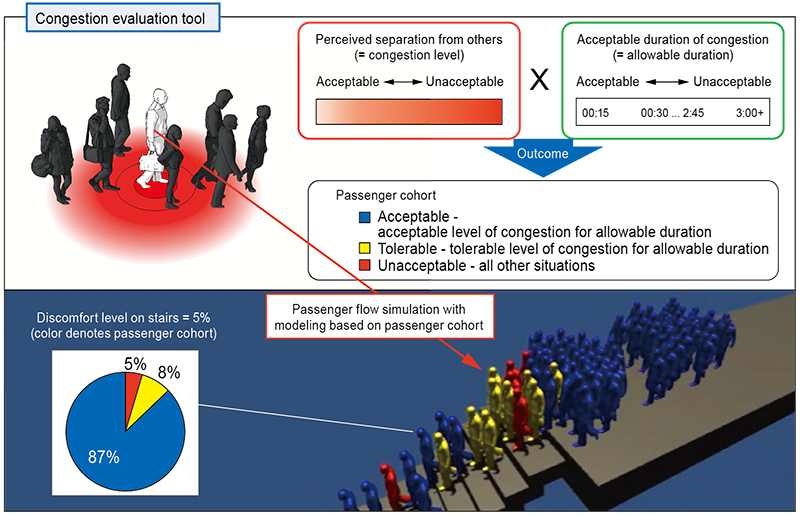28. Tool for evaluating congestion in terms of passenger discomfort in station
Queue time — the duration of continuous congestion in a specific location — is currently the main indicator for evaluating congestion in station premises. However, there can be considerable variance between stations with respect to the spatial design and configuration of congested locations (such as staircase width) as well as how they are utilized (such as the relative proportion of those traveling up versus down). Further, the willingness of passengers to tolerate congestion in a station environment differs between cohorts. Queue time alone is therefore not considered an adequate measure of congestion for the purpose of comparison.
We developed a tool for evaluating congestion in a station environment based on the notion of passenger discomfort. The tool combines passenger flow analysis with modeling of the level and duration of congestion tolerated by different cohorts of passengers, as determined through a survey of passengers on congestion (or density) tolerance (see Figure 1). By calculating passenger discomfort, which represents a constantly changing dynamic, the tool augments the traditional measure of queue time to enable quantitative evaluation of congestion levels in different parts of station premises. Passenger discomfort in congested locations is calculated taking into account factors such as passenger attributes and the spatial configuration of the station, as determined via passenger flow analysis. This allows us to derive a common indicator of discomfort that can be used to make direct comparisons with congested parts of other stations. By enabling direct comparison of discomfort levels at different congestion locations within station premises, and also between stations, the tool can be used to prioritize planning and improvements at railway stations.

